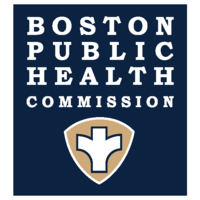Our History
We are the nation's first health department. Our roots trace back to 1799, when Paul Revere became Boston's first health officer.
The initial reason for forming the board of health was to fight a potential cholera outbreak. Cholera is a preventable disease. Health officials posted signs on lampposts, held meetings, and led an early-day public information campaign to reduce cholera deaths.
Two hundred years later, Boston Public Health Commission continues that tradition of prevention. We pride ourselves on having some of the most innovative services for our residents. The Commission has a vigorous commitment to the health of Boston.
Timeline
| Year | Event |
|---|---|
| Year |
1799
|
| Event | The Boston Board of Health was established with Paul Revere as its president |
| Year | 1864 |
| Event | Boston City Hospital opened |
| Year | 1869 |
| Event | Massachusetts established the State Board of Health, a comprehensive and modern state health department |
| Year | 1877 |
| Event | The Boston City Hospital Ambulance Service was established, continuing today as Boston EMS |
| Year | 1898 |
| Event | The Rutland Sanatorium, the first state sanatorium for tuberculosis in the United States, opened |
| Year | 1902 |
| Event | The Boston City Hospital Relief Station was established at Haymarket |
| Year | 1906 |
| Event | Boston established the Consumptive Hospital also as day care center for tuberculosis children and contacts |
| Year | 1918 |
| Event | Fifty-two of 101 nurses at Base Hospital No. 7 were from Boston City Hospital and went to France to serve in World War I |
| Year | 1967 |
| Event | Four community health centers opened across Boston: Savin Street, East Boston, Harvard Street, and Whittier Street |
| Year | 1996 |
| Event | The Boston Public Health Commission was formed, resulting from the merger of Boston City Hospital and Boston University Hospital |
| Year | 2003 |
| Event | The Commission's "Clean Air Works Workplace Smoking Restrictions" regulation banned smoking in Boston workplaces, bars, and restaurants |
| Year | 2006 |
| Event | Boston became the first city in the nation to address racial and ethnic disparities in healthcare and the work is being replicated in cities across the nation |
| Year | 2008 |
| Event | BPHC founded the Center for Health Equity and Social Justice as part of the city’s ongoing commitment to improving the health of communities of color |
| Year | 2009 |
| Event | The Commission launched a unique public awareness campaign that mixed street outreach, the Internet, and traditional media in an effort to halt the rapidly rising spread of sexually transmitted infections among young people in Boston |
| Year | 2010 |
| Event | The Commission, in partnership with Northeastern University, hosted a first-of-its-kind "Break-up Summit" to bring together young people and youth-serving organizations to discuss, plan, and identify strategies to help teens engage in healthy relationship break-ups |
| Year | 2011 |
| Event | Former Mayor Thomas M. Menino banned the sale, advertising, and promotion of sugary beverages on city-owned property, while the Commission launched a hard-hitting public awareness campaign to get residents to reduce their consumption of sugar-sweetened beverages |
| Year | 2012 |
| Event | Former Mayor Menino announced a $1 million investment from Partners HealthCare, Inc. to implement a social and emotional learning curriculum for 7,000 students in 23 Boston public elementary and K-8 schools |
| Year | 2013 |
| Event | The NeighborCare initiative, launched by Former Mayor Thomas M. Menino with hospitals, health centers and health plans, developed guidelines to help transition patients who are treated in Boston’s emergency departments back to their community health centers and improve communication between all providers in order to expand and improve access to community health centers, and to reduce the use of emergency departments for non-emergency care |





